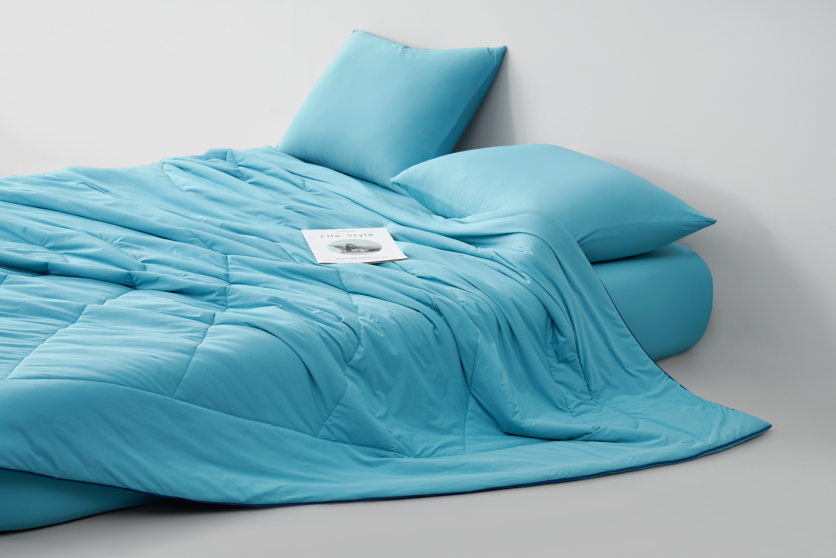
The mention of Sunwin may not perk up the ear, but the company has been a major textile product supplier in China since 2002. From apparel to sleepwear, Sunwin has amassed a plethora of products under its wing, which makes its launch of the Dream Valley brand all the more perplexing: why not launch it as a part of the existing portfolio, thereby leveraging Sunwin's already renowned brand identity?
To answer this question, Dream Valley chief executive officer Shadow Wang, together with Outlast Technologies' CEO Martin Bentz and R&D Director Volker Schuster, explained the idea behind what makes the brand unique and the collaboration between the two companies.
On March 15, Dream Valley landed in the market with a single product called the Dream Valley Cooling Comforter. Such a focused catalog stood in stark contrast to Sunwin's dizzying array of products, matched by its equally extensive categories. However, the cooling comforter also defined the company's positioning as one specifically for improving sleep quality.
To both establish a distinct identity and differentiate itself in the saturated beddings market, Dream Valley turned to Outlast Technologies, a company based in Germany that specializes in thermal insulation fabrics. The company's key product is called Outlast, a fabric technology originally created by NASA for space suits in the early 1990s. The material, which has since been adapted into a range of different applications, uses phase-changing wax microcapsules to absorb and release heat as it melts and condenses.
"Sunwin has a big variety of home decor and home product lines, but it's more for fashion and fun," explained Wang. "...Dream valley is specifically for groups of customers like those hot sleepers. They're suffering from the overheating or and over sweating, and for people who are pregnant or experiencing menopause, and insomniacs. They're sensitive about the room temperature, sleeping temperature and body temperature. Dream Valley is trying to help them to get one extra hour of deep sleep every night."
Schuster described several advantages of the Outlast thermal regulation technology compared to competing solutions. More than just lines of advertising slogans, the difference can be measured and quantified. This is the key benefit Dream Valley is promoting: its cooling comforter proactively regulates sleeping temperature throughout the night, rather than simply offering an initial burst of relief.
"So it's always the question: what is the definition of cooling fabrics or thermal regulating fabric?" said Schuster. "There's a lot of technologies in the market like hydrophilic fabrics. They all claim that they're thermo-regulating, but they're reactive technologies. That means you are sweating. The sweat can be absorbed by the hydrophilic fabric. But with Outlast, we have a proactive technology. That means we avoid sweating because we can absorb the heat and not the sweat. And that makes a big difference because when you absorb the heat, the body doesn't have to sweat so much. And that has a big influence on the comfort of sleep."
In addition to creating a good product, Outlast Technologies' efforts on sustainability also piqued Dream Valley's interest in selecting its material.
"I think one of the key developments in the last few years was that we went very strongly in the sustainability direction," said Bentz. "We changed some of our raw materials from petrochemical-based waxes to natural-base or bio-based waxes. This is very important for us as a company, and this is very important for the market, for our customers. And of course, it's one of these mega trends of consumerism that everybody is making sure that the products, during production, consume less energy, that it's really a safe and a future-oriented technology."
In the future, Dream Valley aims to broaden its Outlast-based products to include sleepwear, home wear, and other accessories.
ⓒ 2025 TECHTIMES.com All rights reserved. Do not reproduce without permission.




